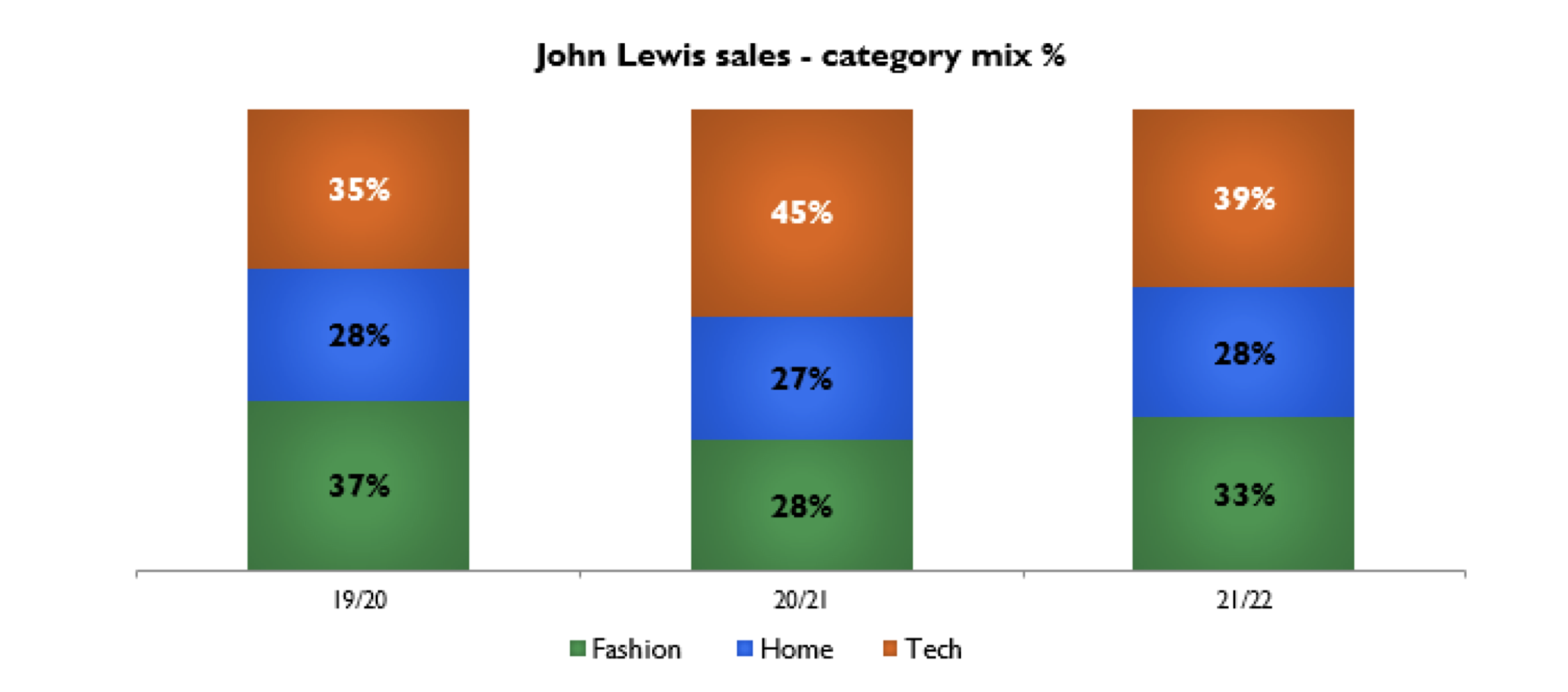3 reasons why John Lewis is a different kind of department store
Eventhough John Lewis & Partners is famous for its department stores, it is essentially a business that mainly sells groceries and has a side business of selling non-food products online.
John Lewis has been one of the least affected department stores during the pandemic, when the traditional department struggled. Here are three takeaways on why John Lewis fared better than others.
1.Food as a pandemic winner
The grocery arm Waitrose is already about 65% of the total revenue of the Partnership whereas the department stores represent about 35%. In the late nineties the department stores were still majority of the Partnership revenue.
The grocery business was also a great way to hedge risks against the pandemic induced decline of the fashion sales. The grocery business saw a big jump in revenues for Waitrose.
2. Online growth countering the decline in stores
Another reason why John Lewis managed the pandemic better than it’s peers was the high penetration of the online business. Already before the pandemic John Lewis had 42% of revenue coming from online. That share peaked at 75% during the pandemic and now after the pandemic lockdowns online share is still at 67%.
3. Broader channel mix
Third reason for the better performance of John Lewis has been the more varied product assortments. Whereas many traditional department stores rely heavily on Fashion sales, John Lewis department stores have three almost equal categories that it relies on: Fashion, Home & Tech. During the pandemic Fashion declined and Tech became significantly more important (easier to sell online).
Source: John Lewis & Partners Financial report


